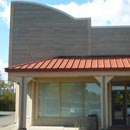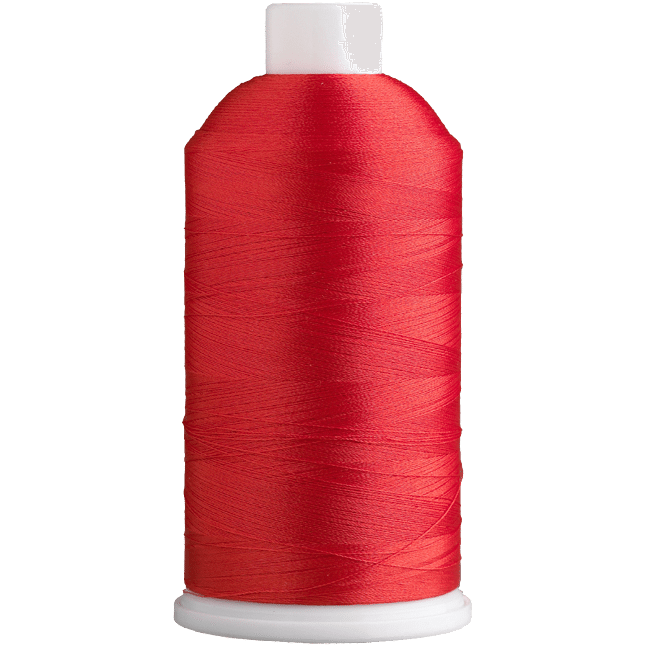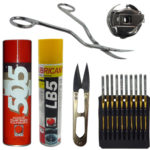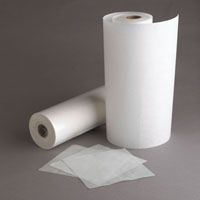
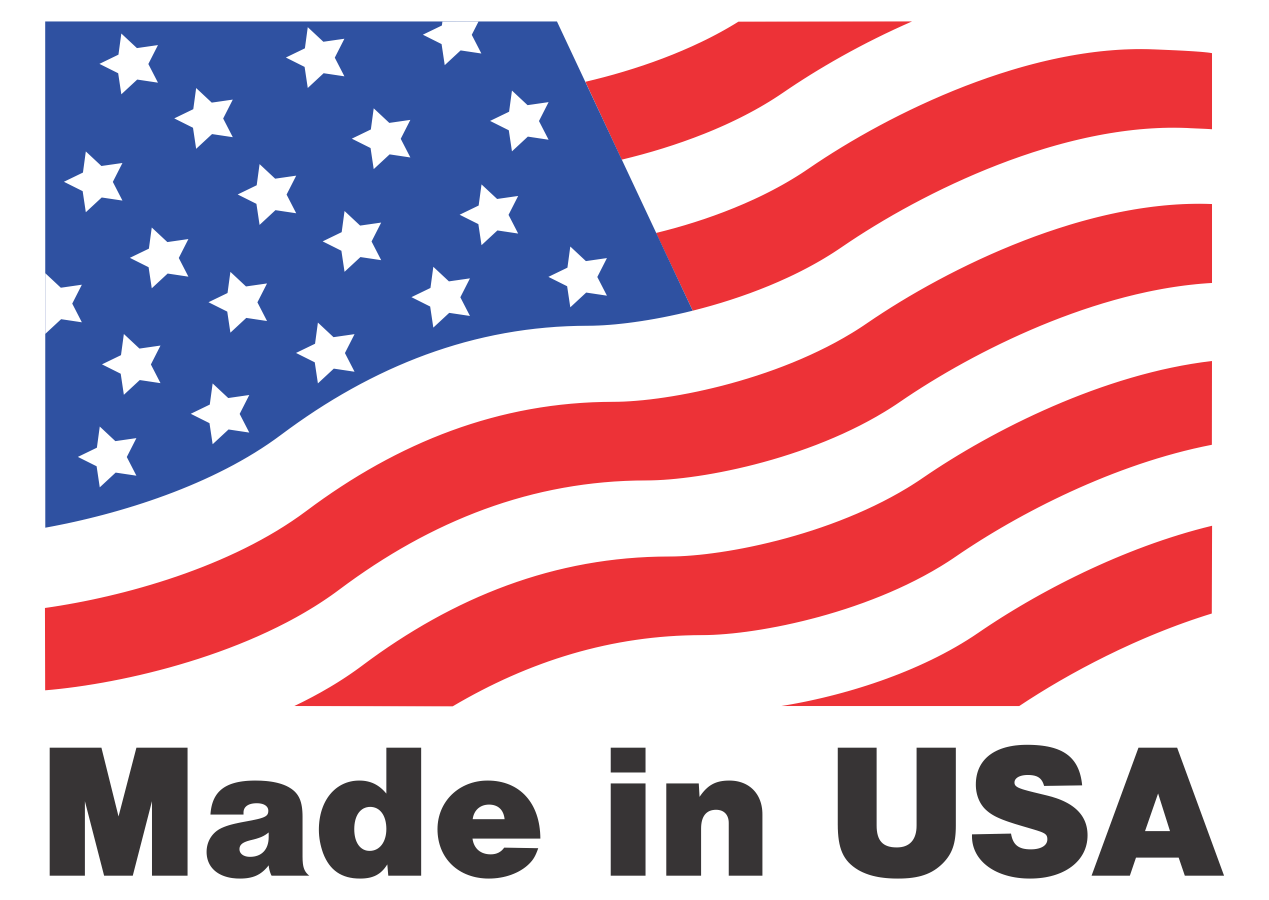
A needle friendly stabilizer, we call it SuperStable.

Following extensive research and months of trial and error, testing products from all over the world, Super Punch is finally introducing its very own line of the latest technology in stabilizers, made in the USA. It became obvious that the machinery and the latest technology used to make high quality backing is only in the USA. Therefore, the USA has a strong hold on the quality products in stabilizers for now and for the next few years as well. SuperStable will be joining forces with the SuperB thread and the pre wound bobbins to complete an unbeatable product line. SuperStable wears its name well. Any commercial or domestic embroiderer will tell you that the stability of his/her application during the actual embroidery process is the key to achieve the highest quality.
SuperStable is the best backing in the world, nothing less. Its soft feel, its “wet laid” construction, its lubricant based content and its rich fibers are all SuperStable trademarks. The SuperStable backing is offered online since November 2008 and forms an excellent trio with the SuperB and the small pre-wound bobbins style L. The modern commercial or domestic embroiderer only needs one address because Super Punch has everything under one roof, even with digitizing services directly from Granby, Quebec. ![]()
Super Punch also understands the needs of the embroiderers and offers the SuperStable backing line in different formats, sizes and weights, to ease your search for the right backing for the right application. Any beautiful embroidery begins with the proper stability, and the goal is to always sew with only one layer of backing. SuperStable offers all of the above, without any confusion, a simple menu easy to use, because we know exactly what you need. Dare to try new products such as the invisible mesh, adhesive backing or even the fusible mesh. Stabilize the foundation of your embroidery with SuperStable.
In one sentence, simply because we have the best product on the market today and the only one exclusively formulated for the embroidery process. Many embroiderers tend to overlook this very important factor in your recipe for a perfect embroidery. This will make or break your finished embroidery look, and its precision and registration. Too many of today’s products are made overseas with the wrong machinery, the wrong recipe and a cardboard feel. They will lower the value and quality of your finished product.
The SuperStable backings are all made in the USA with the finest machinery. Our unique recipes are exclusive to Superpunch and made for the embroidery process. No other stabilizers on the market are made for embroidery, none. At Superpunch, our stabilizers are made multi directionally and also have a lubricating silicone element added, so you get a tight registration, a performance on your machine with less thread breaks and a soft feel.
The most important part of the embroidery process is the registration, and also the perfect ratio between the top thread and the bobbin thread. In general, the key to proper registration is to create a tambourine effect with the material inside the hoop. If the material bounces, slips, or moves ever so slightly, you will lose registration. What a stabilizer does is to aid in achieving this drum skin type tension. A stabilizer should be stable in all directions. People have used all kinds of stabilizers ranging from coffee filters, newspapers or even paper towels as a backing. It becomes like cutting through cardboard. Paper will also break up and shred, causing excessive lint in your bobbin case and machine parts. Please note here the large difference between paper and non woven which are fabric like material , made from long fibers, bonded together by chemical, mechanical, heat or solvent treatment.
As far as the embroidery world is concerned, non-woven stabilizers are manufactured by two different processes-saturate/chemical bonded non-wovens and wet laid non-wovens.
In the first process, saturate or chemically bonded non-woven, the contents are polyester, rayon and some kind of chemical binder (something that hold the fibers together.) It is a dry sludge (a mixture of solid material and water) as it comes off the machine and the fibers are dispersed in 2 methods.
Method 1-Carded or Directional saturate
The fibers are raked or aligned in the machine direction (MD) There is a giant card or rake that combs the fibers in one direction,so there is a definite direction to the fibers.
Carded Saturate Also called chemical bond – the fibers are raked or combed (carded) in one direction (m.d.) The fibers are then impregnated with a binder. It stretches in one direction & tears in one direction. You will need 2 pieces cross wise to achieve proper tension for embroidery.
Please note that these goods do stretch in one direction (CD) cross directionally. Therefore every time you use a carded or directional saturate you will need 2 layers laid crosswise in order to achieve a drum skin type tension. Most of these goods are made for interlinings and for other end uses besides embroidery. This type of non woven addresses the drapability factor but NOT the stability factor.
Method 2- Random Saturate
The second method of dispersal of this saturated sludge is by a random method therefore called a random saturate.
As an easy analogy to understand the method of fiber dispersal lets assume that the sludge is in a giant vat, similar in texture to cookie dough a giant spoon comes along and mixes the fibers and the fibers are dispersed randomly.
Random Saturate
Also Called Chemical Bond – The same solution as with Carded Saturates – Only dispersed randomly. Note the uneven quality, holes in saturate (thick and thin spots) Please note the thick and thin spots! What happens when you hit a thin spot while embroidering? The answer is that you lose tension and registration in this area
Random saturates are made for many industries, roofing, road building, house wrapping, etc. In most cases they are NOT made for embroidery. You will see many saturates in the market, Many of them are inexpensive nonwovens made in Mexico. Some of these are great products, for roofing or road building, but for embroidery there are better choices. The second process is Wet Laid Nonwovens. Wet laid refers to the method of fiber dispersal – using water.
Wet Laid
Much like a high quality paper, fiber is dispersed in a solution. A screen rises and the solution dries (alluvial formation) yielding a multi directional and uniform nonwoven. These are made in different weights. The idea being to always use only ONE layer.
Backings made of even quality with no stretch and non-directional are key. We do an Elmendorf tear test to assure that it tears somewhat equally in all directions.
There are 2 types of wet laid nonwovens, delta formed and rotary formed. For the purpose of this article, we will be concerned with only discuss delta formed wet laid nonwovens. (Rotary formed wet laid non wovens have similar properties with slight differences in density)
The wet laid process is similar to the fine paper making process but there are differences. The process used to take place in rivers – but they are now manufactured in a few plants worldwide w giant machines. There is a slurry of water running through a trough in a machine and there is a wire screen sitting in this trough or bath. We mix in the components polyester (a short fiber) for softness, rayon for tearabilty and stiffness, in varying percentages, depending if it is a tearaway or a cutaway being made. Cellulose is also added as inexpensive filler. All the fibers then are bound together with an acrylic binder and we add silicone as a sewing aid. The screen then rises and dries, similar to an alluvial formation, like a river delta. Evenly spread – there is no direction to the fibers. This is your “tambourine skin”.
The resulting wet laid stabilizers are both non-directional, dense, and soft for drapability. They can also be made firm! We do an Elmendorf tear test to make sure that they tear equally in all directions- MD & CD. They do!
These are specifically made for sewing (the addition of silicone), and even more specifically for embroidery. They are made in weights between 1 osy (ounces per sq yard) and 3 osy.
The idea is to match the weight and density of the stabilizer to your stitch count and stitch density, taking into account the weight and stretch of your fabric. Again- this is your tambourine skin. This should result in you only needing to use one layer of wet laid stabilizer. At this point I would like to make a disclaimer Embroidery is a somewhat complicated business – yet it can be simple! Many people in the industry, commercial or home, do things in unique ways. There are multiple factors involved, weight and stretch of the material, stitch count and density, hooping tensions, the weather, machine tensions, thread differences, top and bottom bobbin tensions and proper digitizing. Things that work for one shop or individual will not always work as well for others. We can only give you a guide as per the best stabilizer.
We make both – in a non-directional wet laid nonwoven. We just change our mixtures. Cutaways have longer fibers. These fibers allow the thread to wrap better and tighter. You should get better definition with a cutaway. Unless labor in trimming is a factor, as in large commercial operation, we would advocate the use of a cutaway with most unstable fabrics. We recommend a soft cutaway on apparel. Stable fabrics, like a nylon jacket, or a Carhartt jacket, that are very heavy almost do not need a backing. However – a wet laid non-directional tearaway will aid in slippage of the hoop and also aid in achieving your tambourine skin, thereby adding extra punch to your definition. Proper stabilization is the foundation for good embroidery. Do not skimp on stabilizers and in the same vein do NOT over stabilize. Drapability and less bulk are the fashion bywords of today. You do not want to walk around with a bulletproof design on your chest. Try not to get into the habit of solving problems by throwing in another layer of backing. Use one layer of a dense, soft, non-directional wet laid non woven.
You will lose registration in this area.
Proper digitizing is as important or more so than proper stabilization. Designs for sale are commonplace as are free designs. Some of the designs that people download for free from the Internet are not made for human beings to properly embroider with. With a properly digitized design, you almost do NOT need a stabilizer (in theory). Luckily for Superpunch, you do need a stabilizer and we get back to the best choice, a single layer of a wet laid nonwoven.
Yes, many of our new products are made earth friendly. Superpunch offers a completely biodegradable tear away product. This special product is composed of half water soluble and half non solubre fibers. Excess stabilizer is torn away and any remnants are dissolved as soon as garment is washed. However, underneath the stitches, the thread and non solubre fibers intertwine to continue to support the embroidery. So your registration remains tight so you get a professional look. Soft, well priced and perfect for a greener planet.
As with any stretchy fabric, embroidering on performance wear can be tricky if you don’t use the right stabilizer. It’s possible that the embroidery may look fine when you finish it, but without proper support after washing it can pucker and even lose registration as stitches are pulled out of shape.
The best stabilizer to use for most performance styles is a no-show diagonal nylon mesh. It has a diagonal embossed pattern that is more stable than previous versions. When this type of mesh is still in its molten form, a giant steam roller comes over it to give it an embossed pattern. This enhances its stability and the diagonal pattern offers the greatest degree of multidirectional stability. This means it is easier to hoop drum tight, which allows for the tightest registration and least amount of puckering and looping.
A way to good test your stabilizer’s directional stability is to stretch it in all directions including diagonally. The more multi-directionally stable the material is, the better the registration. No show diagonal mesh does stretch a little, which is ideal for stretchy fabrics because it will give as the garment gives.
No-show mesh has other advantages for use on performance wear over other cutaways. It is softer, which means it feel better against the skin and drapes better. Also, the mesh is lighter in weight and more translucent so it’s invisible to the naked eye when viewed from the front of the shirt. This is especially important if your performance wear is white or light colored. Traditional stabilizers can sometimes be seen from the front of the shirt as a stiff white square detracting from the overall appearance of the embroidery.
If your stitch counts range between 10,000 and 12,000 stitches, one layer of the diagonal no-show mesh will be sufficient. If your design has more than 10,000 stitches or the stitches are very dense, or they are satin stitches, you will want to pair a layer of no-show mesh with a layer of mid-weight tearaway. Put the mesh closest to the shirt and the tearaway behind it. You will remove the excess tearaway, leaving the soft, sheer, invisible mesh against the body. No show nylon mesh also will protect the skin against scratchy stitches if you use a metallic thread that is a little rougher in texture.
All of our stabilizers are made in the USA. After researching for months, we came to the conclusion that only our American friends had the proper machinery to run such high quality products. Our backings are made exclusively for embroidery use and unlike most of our competitors’products, you will find our products in vacuum filters or car seats. If the backing you are using is from Mexico or anywhere else, you are missing out on a clean, soft and registered embroidery. Our very own recipe was designed specifically for Superpunch, made with cellulose, rayon and polyester, all of which will stabilize the foundation of your embroidery.
Please let us know and we will try to find it for you. Our goal is to serve you completely from A to Z. Also, we can turn around very quickly and add any items for sale on superpunch.com in the blink of an eye. Superpunch is not about corporate and bureaucratic processes, or about paperwork and sales manager meetings with regional sales territories. We are close to you and we are about personal and quick service.
Superpunch understands that the security and confidentiality of personal information transferred over the Internet is the basis for any data privacy program. Superpunch employs Secure Sockets Layer (referred to as SSL) software-the most advanced security software available-to ensure your data’s security. This software encrypts 256 bits all sensitive information that you transmit to us and provides the highest possible level of security.

